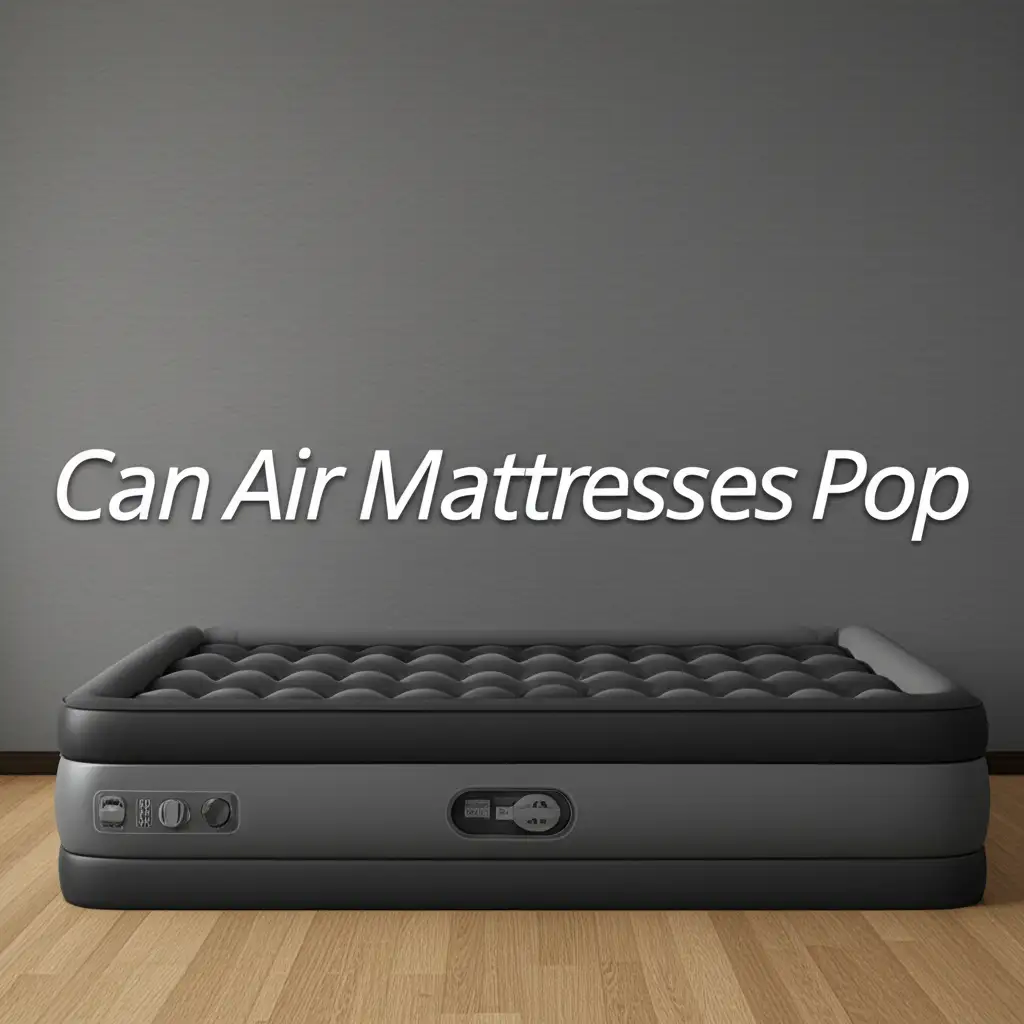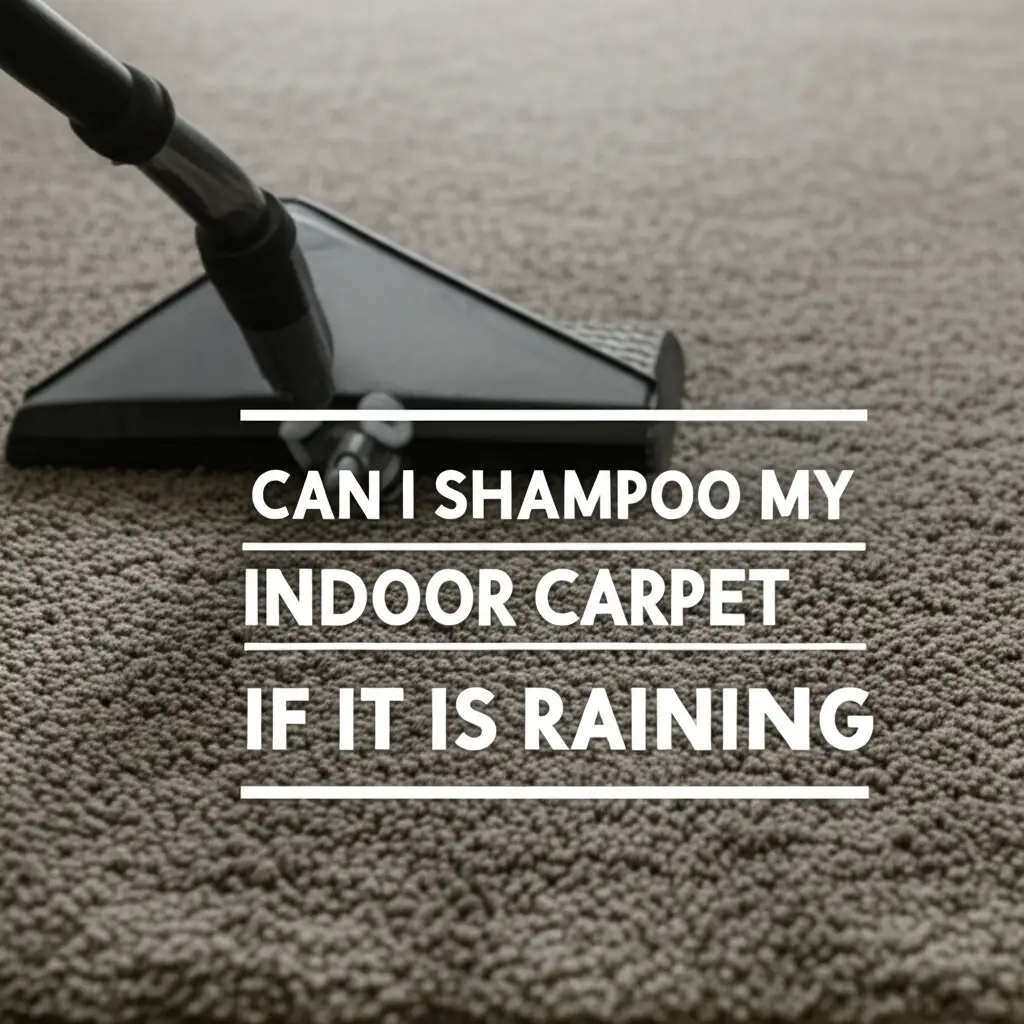· Liora Benning · Home Comfort · 18 min read
Can Air Mattresses Pop

Can Air Mattresses Pop? Understanding Durability and Prevention
It is a common concern for anyone considering an air mattress: “Can air mattresses pop?” We all picture that sudden, loud burst and a rapid descent to the floor. While air mattresses are a convenient, portable solution for guests or camping, their inflatable nature brings unique vulnerabilities. This article will explore why air mattresses can pop or deflate, the common causes of damage, and how you can protect your investment. We will cover everything from material weaknesses to proper care and simple repairs. By the end, you will understand how to keep your air mattress inflated and ready for use.
Takeaway
- Air mattresses can pop or develop leaks from various factors.
- Common causes include punctures, overinflation, seam separation, and valve issues.
- Proper setup, inflation, and storage are key to preventing damage.
- Minor leaks are often repairable with patch kits.
Yes, air mattresses can pop, though a complete, sudden “pop” is less common than a slow leak or tear. They are made from materials like PVC or vinyl, which can be punctured, abraded, or stressed. Overinflation or sharp objects are primary causes of damage.
The Reality of Air Mattress Failure: More Than Just a Pop
When we ask, “Can air mattresses pop?”, we often imagine a dramatic explosion. In reality, a sudden, catastrophic pop is rare. What usually happens is a gradual air loss, known as a leak. This leak can stem from a tiny puncture, a weakening seam, or a faulty valve. Understanding these types of failures helps us address them properly.
Air mattresses are essentially large air bladders made from flexible plastic materials. These materials, while durable for their intended use, are not impervious to damage. Think of them as balloons, but much thicker and designed for weight. Just like a balloon, if you press too hard or introduce a sharp object, the integrity can fail. The primary goal of an air mattress is to hold air under pressure to support weight. When that pressure escapes, the mattress becomes unusable.
The environment where you use the air mattress plays a big role. A clean, smooth surface is ideal. Rough surfaces, small pebbles, or even crumbs can rub against the mattress over time. This constant friction can wear down the material. Even if you use sheets, sharp objects can still press through. Regular inspection before and after use is a good habit. This allows you to spot potential hazards early.
I have found that paying attention to small details makes a big difference. For instance, ensuring the floor is swept clean before I lay out my air mattress prevents hidden dangers. This simple step protects the mattress from unseen sharp bits. Air mattress materials are designed to be strong, but they cannot withstand everything.
Common Reasons Why Air Mattresses Fail
Air mattresses face several common threats that lead to air loss. Understanding these causes helps in preventing damage. Most issues boil down to material stress or external forces. Let’s look at the main culprits.
Punctures and Abrasions
Punctures are perhaps the most well-known cause of air mattress leaks. A small, sharp object, like a thumbtack, a pet’s claw, or even a fallen earring, can pierce the mattress material. These holes can be tiny, making them hard to find but still effective at letting air out. Abrasion occurs when the mattress rubs against a rough surface repeatedly. This friction wears down the material, creating thin spots that eventually tear or leak. Placing the mattress directly on concrete or a gravel driveway can cause this. Even indoor surfaces with hidden debris can pose a risk.
Overinflation
Many people believe more air equals more firmness. However, overinflation puts extreme stress on the air mattress material and its seams. Air mattresses are designed to hold a specific volume of air at a certain pressure. Exceeding this limit stretches the material beyond its capacity. This can lead to the plastic tearing, especially at stress points like seams, or even causing a sudden burst. Always follow the manufacturer’s recommendations for inflation levels. You can often feel when the mattress is firm but not drum-tight.
When mattresses are compressed for shipping, they can be tightly packed. Understanding how mattresses are compressed can give you insight into the stress materials can undergo. An air mattress under too much pressure during inflation experiences similar stress points. How Mattresses Are Compressed offers more details on how materials handle pressure.
Seam Separation
Air mattresses are constructed by welding or gluing together pieces of material. The seams are critical points where two panels meet. Over time, or due to manufacturing defects, these seams can weaken and separate. This creates a larger opening for air to escape. Extreme temperatures can also affect the seam adhesive or welding, making them more prone to failure. If you store your mattress in an attic that gets very hot or a garage that gets very cold, the seams might suffer.
Valve Issues
The inflation valve is where air enters and exits the mattress. If this valve is faulty, cracked, or not properly sealed, air will escape. Sometimes, debris can get lodged in the valve, preventing a complete seal. Check the valve cap and the valve stem itself for any visible damage. Ensure it clicks shut tightly after inflation. A loose valve is a quick way to a deflated mattress.
Material Degradation
Over time, the materials used in air mattresses, like PVC or vinyl, can degrade. Exposure to UV light, harsh cleaning chemicals, or simply age can make the material brittle. This brittle material becomes more susceptible to tears and punctures, even from normal use. This is why a very old air mattress might develop leaks even without obvious damage. Proper storage away from direct sunlight and extreme temperatures helps slow this process.
Preventing Air Mattress Leaks and Damage
Prevention is the best strategy for air mattress longevity. A few simple steps can dramatically extend the life of your inflatable bed. These tips focus on proper handling, environment, and care. I have found these practices save a lot of hassle.
Choose a Safe Location
Before inflating your air mattress, inspect the area where you plan to place it. Look for sharp objects like nails, screws, glass shards, or even small, hard pebbles. Clear the area thoroughly. A smooth, flat surface is ideal. Consider using a protective ground tarp or a thick rug underneath the mattress. This adds an extra layer of defense against punctures from below. Even inside your home, small items can get under the mattress. Always sweep or vacuum the floor first.
Proper Inflation Techniques
Avoid overinflation. Most air mattresses have a recommended inflation level. It is best to inflate the mattress until it is firm but still has a slight give when you press down on it. If it feels like a taut drum, you have gone too far. Overinflation puts undue stress on the seams and material, increasing the risk of a burst or tear. Modern electric pumps often have auto-shutoff features, which can be helpful. If using a manual pump, err on the side of slightly less air rather than too much. Remember, the goal is comfort, not maximum rigidity.
Mind Your Weight Limit
Every air mattress has a weight capacity. Exceeding this limit puts immense strain on the mattress structure. This can cause seams to split or the material to tear, especially if weight is concentrated in one spot. Avoid jumping on the air mattress. Distribute weight evenly if multiple people are using it. Always check the manufacturer’s specifications for weight limits before use. Staying within these limits helps prevent material fatigue.
Protect from Pets and Children
Pets with sharp claws can easily puncture an air mattress. Keep pets off the mattress, or at least trim their claws if they must be near it. Similarly, children can be rough. Jumping, wrestling, or dragging toys with sharp edges on the mattress can cause damage. Supervise children when they are around the air mattress to prevent accidental punctures. My own cat once made a small hole, teaching me this lesson the hard way!
Use Fitted Sheets
While not a direct preventative measure against all punctures, using fitted sheets offers several benefits. Sheets provide a softer surface, which reduces wear from rubbing clothes or rough skin. They also protect the top surface from minor spills or dirt, keeping the mattress cleaner. Additionally, for an enjoyable sleep experience, considering if regular sheets fit different mattress types is important. You can find more information on sheet compatibility here: Do Regular Sheets Fit IKEA Mattresses. This ensures your temporary bed feels more like a real one.
Proper Storage
When not in use, clean the air mattress thoroughly. Make sure it is completely dry to prevent mold or mildew growth. Deflate it fully. Fold or roll it loosely. Avoid tight creases, which can weaken the material over time. Store it in a cool, dry place away from extreme temperatures and direct sunlight. A storage bag protects it from dust, pests, and accidental punctures from other stored items. Proper storage prevents material degradation and ensures the mattress is ready for its next use.
Regular Cleaning and Maintenance
Keeping your air mattress clean helps maintain its material integrity. Wipe it down with a damp cloth and mild soap. Avoid harsh chemicals, as these can degrade the PVC or vinyl. Ensure the mattress is completely dry before storing it. Periodically check the valve for debris or cracks. A clean environment around the mattress also helps. For example, keeping your living space clean overall can prevent small, sharp objects from ending up under your air mattress. Maintaining a clean home, including cleaning air vents, can help keep the general environment free from dust and debris that could potentially damage items like air mattresses over time: How to Clean Air Vents.
Identifying and Locating Air Mattress Leaks
Finding an air leak can feel like searching for a ghost. The hole is often tiny. You can usually narrow down the search area first. Then you can use specific methods to pinpoint the exact spot. Patience is key in this process.
Listen and Feel for Air
Start by inflating the mattress fully. Lie on it and listen carefully for any hissing sounds. Move your ear close to the surface, especially around the seams and valves. Sometimes, you can feel a subtle stream of air on your skin. This method works best for larger leaks. If you hear nothing, the leak is likely very small. I often use this method first.
The Soapy Water Method
This is the most effective method for finding small, invisible leaks. Mix dish soap with water in a spray bottle. Create a good amount of suds. Inflate the mattress fully and then spray a section of the mattress with the soapy solution. Watch for bubbles forming, as this indicates escaping air. Work in small sections until you find the source. Once you find the bubbles, mark the spot with a marker. This method is excellent for tiny punctures.
Submersion Method (for smaller mattresses)
If your air mattress is small enough, you can submerge sections of it in a bathtub or large basin filled with water. Inflate it partially. Press down on the submerged section. You will see air bubbles rise from the leak location. This method is very effective but only practical for smaller mattresses or removable parts like pillows. Make sure to dry the mattress completely afterward to prevent mold.
The “Light Test” (for translucent mattresses)
If your air mattress is made of a somewhat translucent material, you can use a flashlight. In a dark room, place a bright flashlight inside the inflated mattress. Look for any light shining through the material from the outside. This can help reveal tiny holes or thin spots. This method is less common but can be surprisingly effective for certain mattress types.
Check the Valve
Before going through extensive leak detection, always check the inflation valve. Ensure it is tightly sealed. Wiggle it to see if air escapes. Sometimes the valve itself is faulty or simply not closed properly. A quick fix can save you a lot of time.
Repairing a Punctured or Leaking Air Mattress
Once you find the leak, repairing it is usually straightforward. Most air mattresses come with a repair kit. If not, you can easily buy one. A good repair kit contains patches and adhesive. I have patched several mattresses successfully.
Prepare the Area
First, make sure the mattress is deflated. Clean the area around the leak thoroughly. Use rubbing alcohol or an alcohol wipe to remove any dirt, dust, or grease. This helps the patch adhere properly. Let the area dry completely before applying the patch. A clean, dry surface is vital for a strong bond.
Apply the Patch
If your kit has peel-and-stick patches, simply peel off the backing and press the patch firmly over the leak. Make sure the patch fully covers the hole with a generous overlap. If your kit includes a liquid adhesive and a separate patch material, apply a thin layer of adhesive to the patch. Press the patch firmly onto the prepared area, ensuring no air bubbles are trapped underneath. Hold it in place for a few minutes.
Allow Curing Time
Follow the instructions on your repair kit for curing time. This is the time needed for the adhesive to fully bond and dry. It usually ranges from a few hours to 24 hours. Do not inflate the mattress during this time. Rushing the curing process can lead to a weak bond and the patch failing. Patience here prevents re-work.
Test the Repair
After the recommended curing time, inflate the mattress. Listen and feel for air around the patched area. If you used the soapy water method to find the leak, you can use it again to test the repair. Spray the patch with soapy water. If no bubbles appear, the repair is successful. If you see bubbles, the patch might not have sealed properly, or there might be another leak nearby.
Repairing Seam Leaks
Seam leaks are trickier. Regular patches might not hold well on a seam due to the increased stress. Some repair kits offer specialized seam sealants or larger patches for these areas. For a small seam leak, a standard patch might work if applied carefully. For larger seam separations, professional repair might be needed, or it might be time for a new mattress.
Extending the Life of Your Air Mattress
Beyond preventing punctures and knowing how to repair them, general care practices can significantly extend your air mattress’s lifespan. Think of it as investing a little time now to save money later. These practices focus on mindful use and storage.
Avoid Extreme Temperatures
Air mattress materials, often PVC or vinyl, are sensitive to temperature extremes. High heat can soften the material and weaken seams, making them more prone to stretching or tearing. Cold temperatures can make the material brittle, increasing the risk of cracks or punctures when folded or used. Never store your air mattress in an uninsulated garage, attic, or car trunk where temperatures fluctuate wildly. A climate-controlled closet is ideal.
Gentle Deflation and Folding
When deflating, allow the air to escape naturally or use the pump’s deflate function. Do not jump on the mattress to force air out, as this can stress the seams. Once deflated, fold or roll the mattress loosely. Avoid tight, sharp creases, which can create weak points in the material over time. Some mattresses come with specific folding instructions; follow them if provided.
Store in Original Bag or Container
Many air mattresses come with a storage bag. Use it! This bag protects the mattress from dust, dirt, and accidental punctures from other stored items. If you no longer have the original bag, use a clean duffel bag or a plastic storage bin. Ensure the mattress is completely dry before storing to prevent mildew. I always try to keep the original bag, as it is perfectly sized.
Use a Mattress Topper or Pad
Adding a mattress topper or a thick mattress pad can enhance comfort and provide an extra layer of protection. This layer can absorb some impact and provide a barrier against minor abrasions or small, blunt objects. It also helps regulate temperature, making the sleeping surface more comfortable. Some toppers are very plush, making an air mattress feel more like a traditional bed.
Regular Inspection
Before each use, take a moment to visually inspect your air mattress. Look for any visible signs of wear, small holes, or weakened seams. If you spot a problem, address it before inflating and using the mattress. Early detection can prevent a small leak from becoming a larger, unfixable issue. This quick check takes only a minute but can save your night’s sleep.
When to Replace Your Air Mattress
Despite your best efforts, there comes a time when an air mattress is beyond repair or no longer serves its purpose effectively. Knowing when to replace it saves you frustration and ensures comfortable sleep. Factors like age, severe damage, and repeated issues play a role.
Extensive Damage
If your air mattress has multiple large holes, significant seam separations, or a widespread network of small leaks, repair becomes impractical. Patching dozens of small holes or re-sealing large sections of a seam is often futile. The cost of repair materials and the time involved might outweigh the cost of a new, inexpensive air mattress. A heavily damaged mattress will likely keep springing new leaks.
Constant Deflation
Even if you repair a leak, if your air mattress consistently deflates overnight without an obvious new puncture, it might indicate generalized material fatigue. The plastic material might be thin and weak throughout. This means air is seeping out through microscopic pores in the material itself. This type of widespread leakage is impossible to patch. It signifies the end of the mattress’s useful life.
Age and Material Degradation
Over many years, the materials in an air mattress naturally degrade. PVC and vinyl become less flexible, more brittle, and prone to micro-tears. Even if stored perfectly, the material will eventually lose its integrity. If your air mattress is very old (5-10+ years), even with light use, it might be time to consider a replacement. This degradation is often invisible until leaks appear.
Valve Failure
A broken or severely cracked inflation valve is difficult, if not impossible, to repair effectively. The valve is critical for holding air pressure. If it cannot seal properly, the mattress will not stay inflated. While some valves are replaceable, finding the correct replacement can be challenging. A faulty valve often signals the need for a new unit.
Uncomfortable Sleep
The primary purpose of an air mattress is to provide a comfortable temporary bed. If your mattress no longer holds air consistently or develops lumps and unevenness despite proper inflation, it fails its main purpose. You and your guests deserve a good night’s sleep. An old, worn-out mattress that does not provide adequate support should be replaced. My family depends on a good night’s sleep, so I know comfort matters.
FAQs About Air Mattress Durability
How long do air mattresses typically last?
Air mattress lifespan varies greatly depending on usage and care. A good quality air mattress used occasionally and properly maintained can last 5 to 10 years. Those used frequently or roughly might only last 1 to 3 years. Proper storage and inflation significantly extend their life.
Can cold weather cause an air mattress to pop or deflate?
Yes, very cold temperatures can cause an air mattress to deflate or even become more susceptible to damage. Air contracts in the cold, making the mattress appear to lose air. The material itself can become brittle and more prone to cracking or tearing when moved. Always allow it to warm up before reinflating.
Are higher-priced air mattresses more durable?
Generally, yes. Higher-priced air mattresses often use thicker, more durable PVC or vinyl. They might feature reinforced seams, better quality valves, and sometimes even flocked tops for added puncture resistance. Investing in a good quality mattress usually pays off in terms of longevity.
Can an air mattress be patched multiple times?
Yes, a good quality air mattress can be patched multiple times if the leaks are small and in different locations. However, if the mattress develops many leaks, or if patches don’t hold, it indicates widespread material degradation. At that point, it is usually better to consider replacement.
Is it safe to sleep on a slowly deflating air mattress?
While not dangerous, sleeping on a slowly deflating air mattress is uncomfortable and does not offer proper support. It can lead to back pain or poor sleep quality. It is always best to find and repair the leak before using the mattress for sleeping.
What should I do if my new air mattress leaks right away?
If a brand-new air mattress leaks, it likely has a manufacturing defect. First, try to locate the leak. If it is a minor issue, a quick patch might resolve it. However, if the leak is significant or unfixable, contact the retailer or manufacturer for a replacement under warranty.
Conclusion
The question “Can air mattresses pop?” is common, and the answer is yes, they can, but usually, it is a slow leak rather than a sudden burst. Punctures, overinflation, seam failures, and material degradation are the main culprits behind air mattress issues. By understanding these causes, you can take proactive steps to protect your investment. Simple practices like choosing a safe location, avoiding overinflation, and proper storage are crucial.
Should a leak occur, don’t despair. Most minor issues are repairable with a simple patch kit. However, knowing when an air mattress is beyond repair is also important. If you prioritize comfort and durability, investing in a quality air mattress and providing consistent care will ensure many nights of comfortable sleep. Take care of your air mattress, and it will take care of you.





